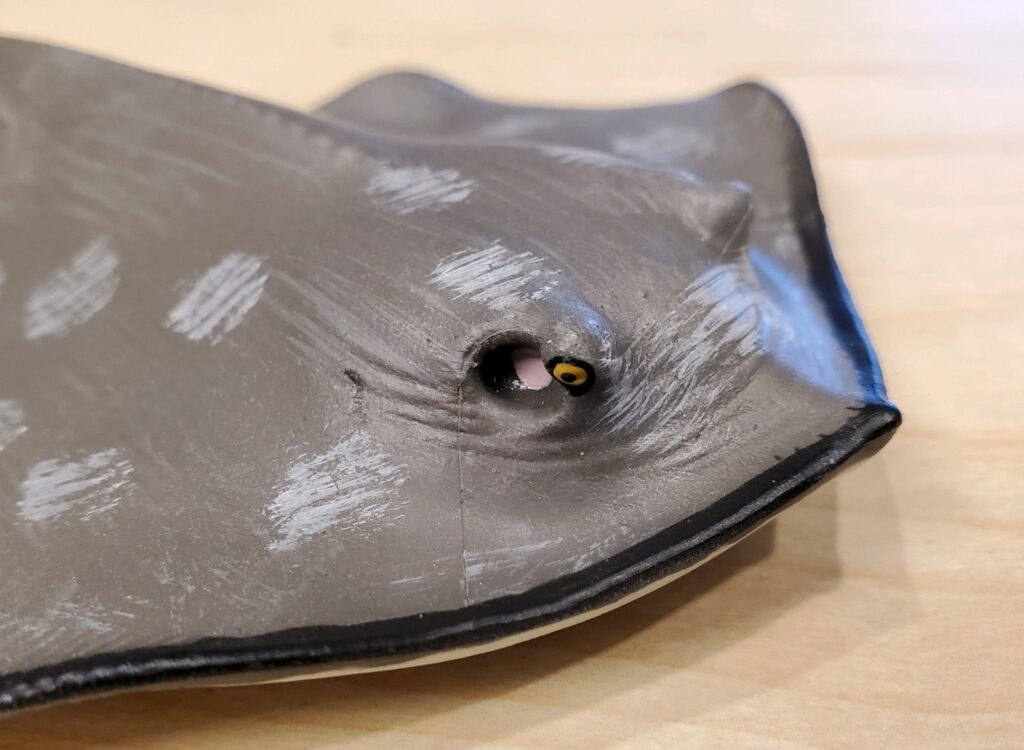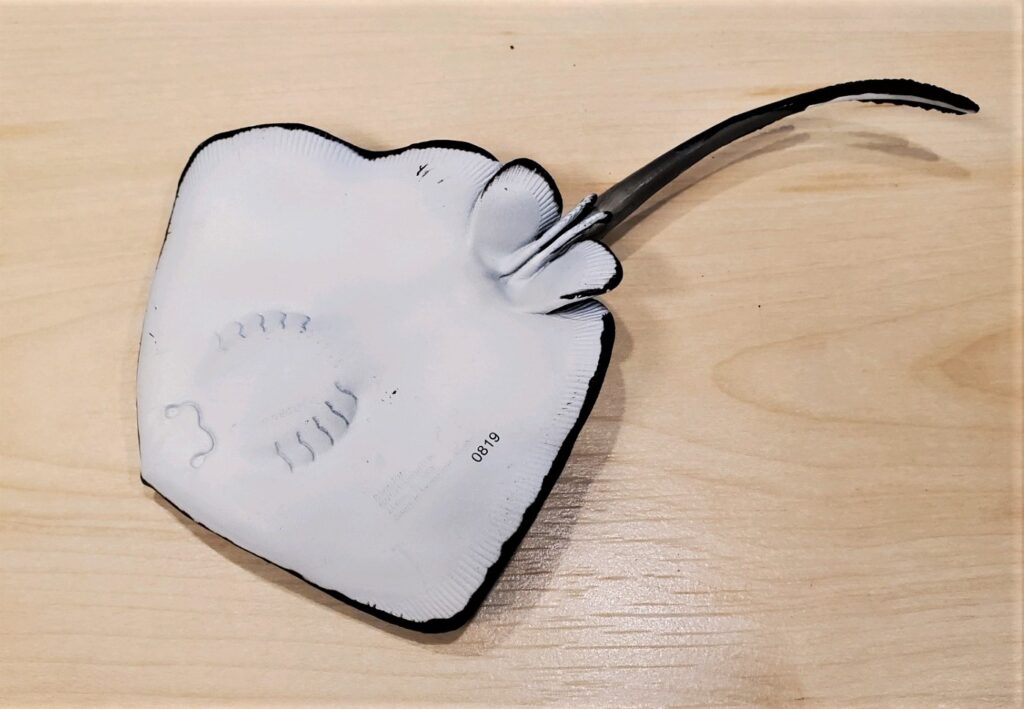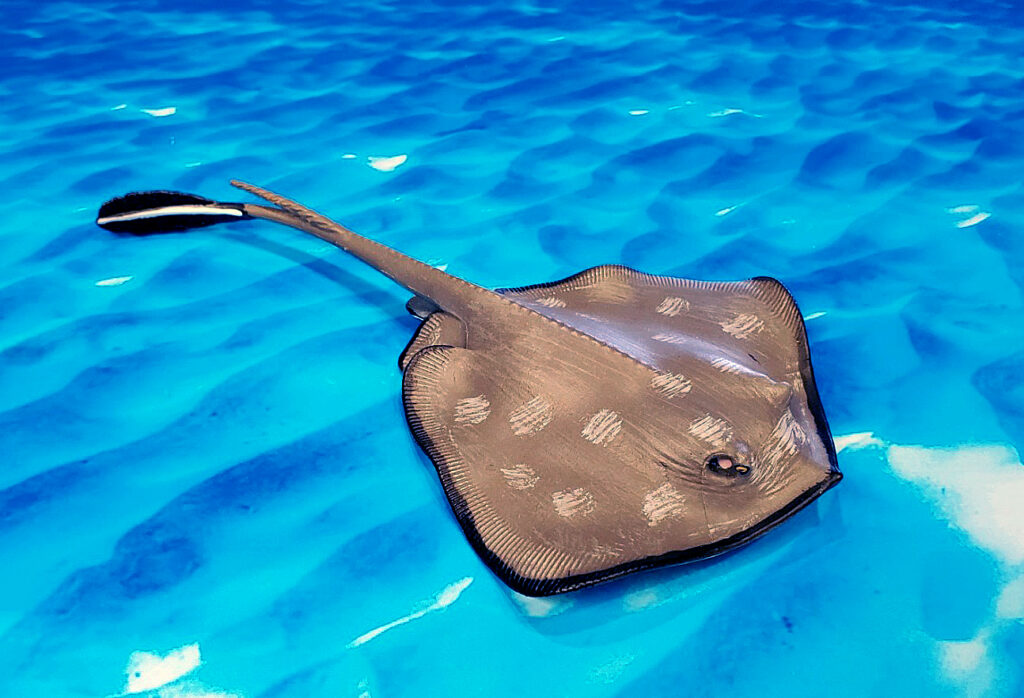Today’s Shark Week review is going to cover the stingray that was produced by Safari Ltd. in 2020 as part of their Incredible Creatures line. I know, I know, stingrays are not technically sharks, but here at the Animal Toy Blog we celebrate all kinds of cartilaginous critters during Shark Week! Before we look at the figure itself, let’s discuss the possible identity of the stingray. There has been much discussion on the forums as to what species this stingray represents. Safari Ltd. specifically marketed it on their website as being in the genus Dasyatis; I think at one point the site may have even specified the common stingray, D. pastinaca, but as of the time of this writing, they only list the genus. However, it has been pointed out that the tail folds are too prominent for D. pastinaca and the poison barb is in the wrong location. It has been suggested that if this is a member of the genus Dasyatis, then the diamond stingray (D. brevis) might be a better option because of the more prominent tail folds. Either way, the figure lacks the long whiplike terminus characteristic of Dasyatis species that extends beyond the tail folds (but those are not present on every specimen; whether that is natural or they are prone to breakage, I haven’t quite figured out yet). Other proposed identifications include the wide stingaree (Urolophus expansus), the cowtail stingray (Pastinachus sephen), and short-tail stingray (Bathytoshia brevicaudata), all of which have features more inline with the sculpt than any of the Dasyatis. For my personal collection, I am databasing the figure as D. brevis, as it is the best option based on tail morphology that fits with Safari calling it Dasyatis. Dasyatis brevis is sometimes placed in synonymy with D. dipterura, but WoRMS still has it as a valid name and so shall I. For purposes of the Blog’s tags, I will simply use the genus-level taxon. But an important take-home message is that if you want this figure for your collection, you have several options for what you can call it if you don’t like Safari’s designation.

The figure has a total body length of 17.5 cm and a width of 10 cm. Using width as a metric due to the variation in tail length, it would be in the following scales for a maximum-sized specimen for each of the aforementioned species:
- common stingray: 1:14
- diamond stingray: 1:10-1:12
- cowtail stingray: 1:18
- short-tail stingray: 1:21
- wide stingaree: 1:3.6

The dorsal surface is smooth with a matte gray finish; there are pale grey brushings on the dorsal surface, possibly to imply light reflections (?). The pectoral fins are sculpted in a gentle undulating manner, as if the ray was casually gliding above the sea floor. The eyes are yellow with black pupils and the respiratory siphons are cream-colored. Ventrally, the main body is white. The accurate number of gill slits (five) is present. Claspers are sculpted, indicating the figure represents a male.

The tail is roughly the same length as the body. Like other whiptail stingrays, it lacks dorsal and caudal fins. As previously mentioned, it has prominent dorsal and ventral tail folds and a prominent spine located about midpoint along the tail; these latter two features are part of the reason assigning an exact species has been so challenging to date. The tail folds are painted black with the tail itself at that point painted white, in contrast to the more basal portions of the tail.

I almost didn’t buy this figure, as I tend to like my rays and skates in the ‘standard’ size; this figure isn’t disproportionately big for a toy in the Incredible Creatures line however, and I don’t regret buying it at all. While I can personally recommend it, I can see how it may not appeal to collectors who want a well-defined species or figures in a stricter scale.

Disclaimer: links to Ebay and Amazon on the AnimalToyBlog are affiliate links, so we make a small commission if you use them. Thanks for supporting us!




I’m not in love with this particular figure but it does make me wish for more rays. Great review, as always.